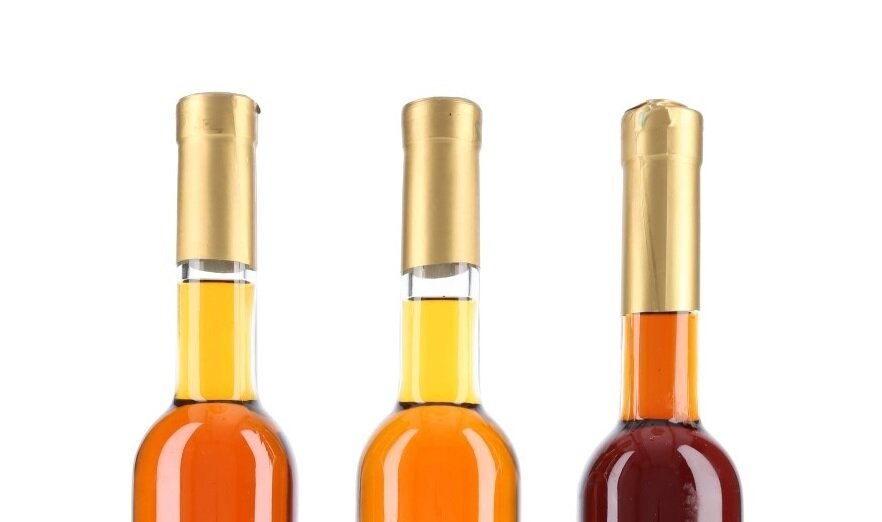
Dear reader,
Comfort is something we can all agree on. Think comfort food like rich pasta, splendid casseroles… Yum!
So… let’s bring comfort to the glass with dessert wines.
Dessert wines… rich, perfectly sweet – and yet achieved through careful, passionate winemaking. No, it’s not a matter of pouring sugar – even though some sweeter high-quality wines, such as with dosage, in Champagne, do it gracefully.
Late harvest, noble rot, drying grapes, frozen grapes, fortification – different techniques yield marvelous dessert wines.
Here are the practices that winemakers use to achieve perfect sweetness for the world’s most prestigious dessert wines.
Late harvest
Better late than… any other moment
The patient act of letting certain grapes on the vine to overripe, under certain conditions, is key to making sweet wines.
As these grapes are left to be picked after the general harvest period (staying until November or even early December), they increase their sugars – lowering acidity to the right touch. To this, winemakers opt not to ferment to dryness, keeping alcohol levels low.
The world’s most famous late harvests include German and French produces from grapes such as Riesling (Spätlese/Auslese), Muscat, Gewürztraminer, Pinot Gris and Chenin Blanc.
Sauternes (photo by Pascal Moulin)
Botrytis
The one and only noble rot
The world is made of accidental discoveries, and we are lucky that one seemingly destructive fungus is actually a wonder to make delicious sweet wines.
Botrytis cinerea, which we come to usually know as noble rot, develops well in some damp areas, growing on the skin of certain white grapes, raisining them to hyperconcentrate their sugars. Of course, yields are pretty low and good botrytized wines are quite expensive.
Look for varieties such as Riesling, Sémillon, Sauvignon Blanc and Chenin Blanc can produce honeyed, rich sweet wines. Think Sauternes and Barsac, the wonders of Riesling’s beerenauslese such as Staffelter Hof’s and trockenbeerenauslese, Hungarian Tokaji (Furmint), Quarts de Chaume (Chenin Blanc).
Dried grapes
Raising the raisins
Another way of concentrating sugars in a natural fashion, a thousands of years-long Mediterranean tradition, is simply by drying out grapes. Yes – wine from raisins!
These “straw wines” include French Vin de Paille, Italian beauties as Vin Santo, passiti like Venetian Recioto, as well as other interesting sweet treats such as Commandaria (Cyprus) and sweeter Sherry.
Frozen grapes
Chill out – a lot.
No wonder they’re called Ice wine or Eiswein. These are extremely rare wines, made only in extremely cold, frosty regions where producers have to rely on the natural hard freezing of their grapes, helping to separate their sugar from the frozen water. And they have to be pressed before they thaw. Very quick action is needed, indeed.
These usually thrive only in certain regions of Canada and Germany, under strict regulations, while other countries as Switzerland also do it. In cases of mild winters, it can get to the point of special authorizations being issued for winemakers to freeze their grapes mechanically to get the job done. Riesling, once again, is the top grape for these honeyed botrytized-style flavours.
Fortification
Taking it higher
Okay, we’ve already gone through the marvels of fortified wines!, but since this is another subject, these could never be left behind.
Unlike other dessert wines, sweet fortified wines become sweet thanks to an artificial intervention: cutting fermentation short with the addition of neutral grape spirits such as brandy in earlier stages of the process. Since this infusion kills the yeasts that ferment the wine before sugar is converted to alcohol, an interesting result comes: a naturally sweet wine, but with higher alcohol levels. This helps both red and white grapes to achieve the right dessert-like aspect, as the reds are generally intolerant to the abovementioned raisin-like methods.
Think Port, think Madeira, think Sherry, think Vin Doux, think Moscatel de Setúbal: despite their differences, rich, nutty and caramelized fruit flavours are seen throughout different versions of each.
* * * * *
We at Alti Wine Exchange have the utmost pleasure of offering a few options that can do wonderfully as dessert wines. Don’t miss out!
Until next time!
More you might want to read…
